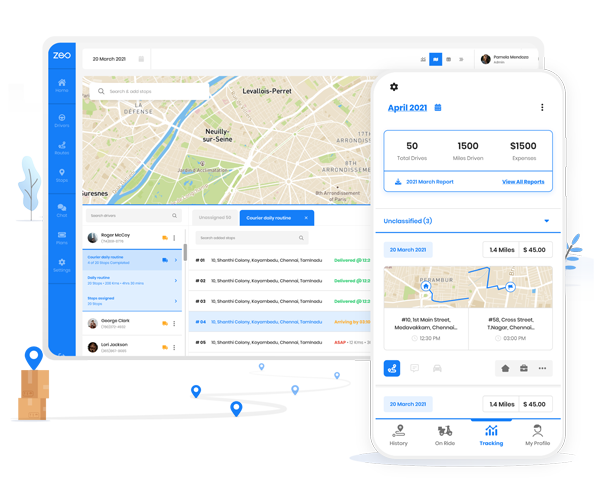According to ShipBob’s Inventory Turnover Benchmark Report, the average inventory turnover rate fell by 22% from 2020 to 2021. While the same figure reached 46.5% in the first half of 2022. These numbers are concerning for delivery business owners. It is high time they focus on streamlining their delivery process and improving the inventory turnover ratio.
What is Inventory Turnover Ratio
The inventory turnover ratio is a financial ratio that measures how quickly a company is able to sell and replace its inventory over a given period of time. Business leaders can use the inventory turnover ratio to understand the efficiency of their supply chain process and warehouse management. This ratio also provides insights into the product demand in the market and availability.
What is a Good Inventory Turnover Ratio
A good inventory turnover ratio varies according to the industry and can depend on several factors such as the nature of the business, the type of products sold, and the market demand. However, in general, a higher inventory turnover ratio is considered better. A higher inventory turnover ratio indicates better business performance. It also indicates that the company is efficiently managing its inventory and has a strong sales performance.
For eCommerce businesses, an inventory turnover ratio of 4-6 is considered healthy However, some industries such as fast-moving consumer goods (FMCG) or electronics may have higher inventory turnover ratios (around 9), while others such as luxury goods or jewellery may have lower ratios (around 1-2).
How to Calculate Inventory Turnover Ratio
Inventory Turnover Ratio – Cost of Goods Sold (COGS) / Average Inventory
COGS – Starting inventory cost + Cost of purchased inventory – Closing inventory cost
Average Inventory – (Beginning inventory – Ending inventory) / 2
Example – Consider the initial cost of the inventory of goods is $5000 and goods worth $4400 are added to the inventory later. After the distribution and sales cycles, the ending inventory is worth $3800. In this case,
COGS = $5000 + $ 4400 – $3800
COGS = $5600

increase fuel savings
Hassle Free Deliveries & Pickups!
Optimize routes with our algorithm, reducing travel time and costs efficiently.
Get Started for Free
Average Inventory = ($5000 – $3800) / 2
Average Inventory = $600
Inventory Turnover Ratio = $5600 / $600
Inventory Turnover Ratio = 9.3
How to Improve Your Inventory Turnover Ratio
- Improve the Inventory Management Process
Improving the inventory management process can help companies easily monitor the inventory volume. Implementing a just-in-time inventory system will allow them to order inventory only when it is needed and only in the required quantities. This helps in reducing the excess inventory on hand and eliminates the risk of overstocking. - Streamline Supply Chain to Reduce Lead Time
A company can reduce the lead time required to receive inventory by working with suppliers to improve their delivery times. They can also streamline the supply chain mechanism by finding alternative suppliers who can provide inventory faster and meet their business requirements. Improving communication with suppliers, optimizing shipping and delivery times, and reducing the number of intermediaries involved in the supply chain will also help in streamlining the process. - Analysis of Sales to Boost Revenue
Analyzing sales data can help identify which products are selling well and which ones are not. This will enable the company to make informed decisions about which products to stock and how much inventory to keep on hand. A company can increase its sales by improving its marketing efforts, expanding its product line, or offering discounts to encourage customers to purchase more. - Forecast Future Demands
Analysing and understanding consumer behaviour, expectations and present and future market demand will help you adjust your inventory levels accordingly. This will enable you to make informed decisions about which products to stock and how much quantity to keep on hand to be able to cater to future market demands. - Liquidating Slow-Moving Inventory
You can liquidate slow-moving inventory by offering discounts or promotions. This will help in moving the inventory out of the warehouse and free up space for more popular items. Offering promotions and discounts can help increase sales. This can eventually improve inventory turnover. For example, you can offer a discount on products that are approaching their expiration date or are not quite popular in demand. - Utilizing Technology
Using inventory management software can make it simple and effective to track inventory levels, sales data, and customer demand in real time. This leads to better decision-making and improved inventory turnover.
Related Read: Supply Chain Management for Delivery Businesses.
Related Read: Warehouse Location: Criteria to Keep in Mind when Investing in a New Warehouse
Conclusion
Improving delivery efficiency is crucial for businesses, more so for improving the inventory turnover ratio. The most effective and proven way to improve business efficiency is by implementing route optimization software. A route planner like Zeo not only helps you deliver faster but also manages the entire delivery process through a single app. You can improve your delivery efficiency, cut down on fuel costs and delivery time and improve the customer experience.
Schedule a free product demo with our experts to understand how you can improve business efficiency and boost the inventory turnover ratio.

Are you a fleet owner?
Want to manage your drivers and deliveries easily?
Grow your business effortlessly with Zeo Routes Planner – optimize routes and manage multiple drivers with ease.

increase fuel savings
Hassle Free Deliveries & Pickups!
Optimize routes with our algorithm, reducing travel time and costs efficiently.
Get Started for Free




















